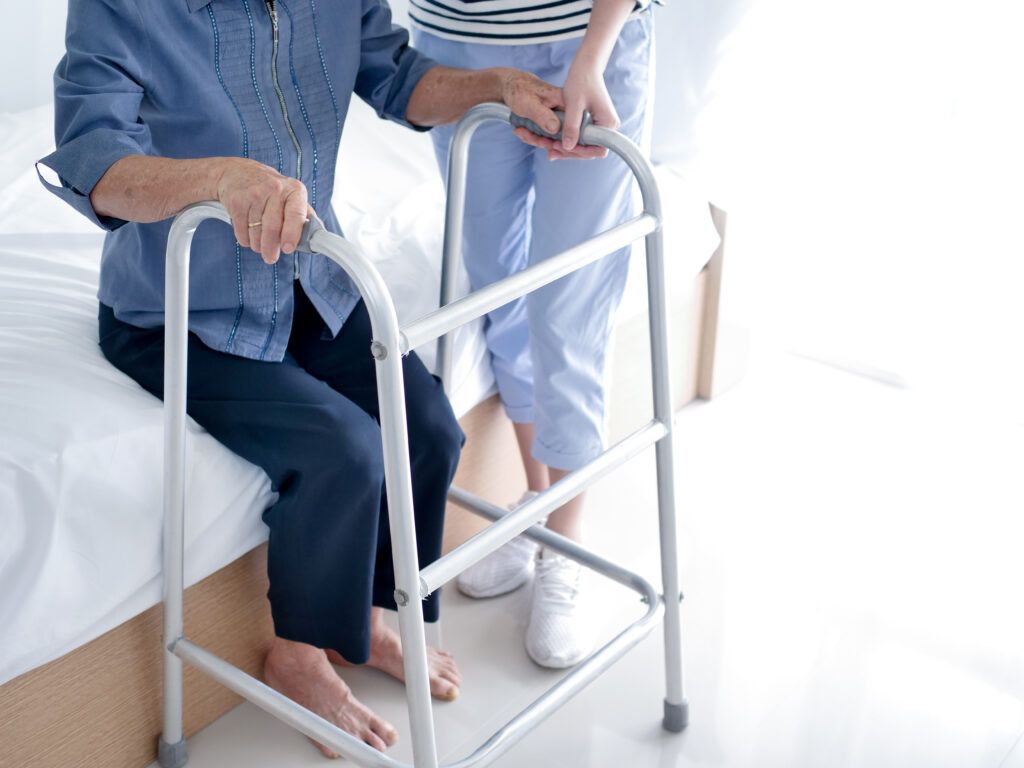For the aging with independence, having to choose between living independently and living safely is unbearably difficult. A 2018 AARP survey showed that 76% of Americans aged 50 and older prefer to remain in their current residences as they age, but many don’t believe they’ll be allowed that opportunity. Sixty percent of adult children surveyed said they were concerned about their parents’ preference of aging in place, recognizing the risks involved.
Thankfully, new high-tech, non-wearable elderly monitoring devices are expanding possibilities for caregivers and seniors, making long-term at-home aging and living an increasingly viable option with many benefits.
Wearables and cameras are limited
Since the 1980s, wearable monitoring devices and “panic buttons” have been ubiquitous in senior care. Often resembling pendants and watches, the systems can alert caregivers and medical services in the event of an emergency. Not only are these systems often bulky and expensive, but they become futile if the wearer is unconscious or too injured to press the button.
Additionally, wearables require the user to charge the devices and remember to put them on daily, a challenge for older adults, especially those experiencing memory loss. A 2016 study revealed that 23% of seniors do not wear monitoring devices for the full number of hours requested by medical professionals. This leaves significant amounts of unmonitored time, during which accidents and emergencies can occur.
To overcome the limitations of wearable devices, some senior care facilities and caregivers opt to install cameras to monitor elder safety. Many consider this surveillance to be an invasion of privacy, especially if cameras are installed in bathrooms, where falls are likely to happen. Additionally, cameras have to be monitored 24/7 in order to catch if and when someone falls.
Non-wearable elderly monitoring devices circumvent the issues inherent with wearables and surveillance cameras, offering a non-invasive solution with the potential to change -and save – lives.
Cutting edge sensing technology
There are multiple non-wearable elderly monitoring technologies available. Some rely on radio signals to monitor movements, some use radar. Origin Wireless offers award-winning AI technology that harnesses WiFi signals to sense disruptions and interpret movement. This is called WiFi Sensing. Unlike camera-based alternatives, WiFi Sensing tech can “see” around walls and behind curtains while simultaneously preserving privacy.
The WiFi sensors detect irregularities in breathing, sleeping, location, and motion. When behavior deviates from the norm, the system acts, notifying caregivers through mobile alerts.
Eighty six percent of seniors have WiFi access in their homes, meaning installing WiFi Sensing elderly monitoring devices would be a simple process, and wouldn’t require major changes to daily life. WiFi Sensing successfully monitors falls and activities of daily living (ADL) without interruption.
Effective AI-driven passive monitoring
Non-wearable passive monitoring is the answer many caregivers have been seeking for years. They don’t have to burden elderly patients with wearables, and they don’t have to be on-site constantly; they can simply let the technology do its job, knowing they’ll be alerted if something goes wrong.
One of the most valuable aspects of the technology is its ability to detect falls. According to the Centers for Disease Control and Prevention, one out of four older people (65+) falls each year. Less than half tell their doctor about their falls, often leading to additional injuries. WiFi Sensing home monitoring detects when a person abruptly shifts from standing to laying on the ground, triggering an alert to caregivers or family members.
Origin Wireless’s Fall Detection AI Engine has the highest rate of detecting falls and the lowest false alarm rate in the industry. Combined with Origin’s highly sensitive Breathing AI Engine, the WiFi Sensing systems offer dynamic data and real-time status updates. The detailed alerts, such as if the person has gotten up from the fall, reduce response time and ensure that the fallen person can get the help they need.
Monitoring data can be accessed remotely, which proved especially important at the height of the COVID-19 pandemic when caregivers and family members were not allowed regular in-person access to elderly loved ones. The ability to “check-in” from a distance relieves stress and worry, offering invaluable peace of mind.
Increased comfort, independence, and security
Non-wearable elderly monitoring devices allow people to age in place, live independently, and feel comfortable in their own homes. These tech advancements offer a level of ease and privacy previously unseen in the industry. Now, elderly loved ones can stay autonomous but have the security of knowing they will get help if they need it.
The applications and features of these devices will only continue to increase as the market grows. The need for non-invasive remote homecare is not going anywhere, and we look forward to observing the positive impact this technology has on elderly loved ones and their caregivers across the globe.
To learn more about the applications of WiFi Sensing for Home and Health, be sure to check back in for our next blog!

